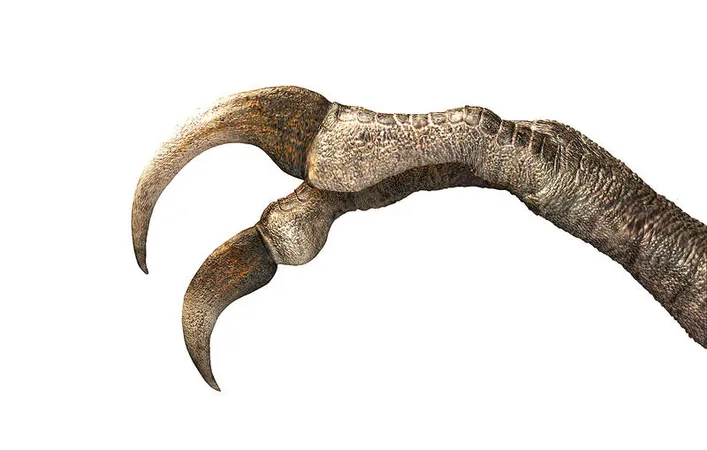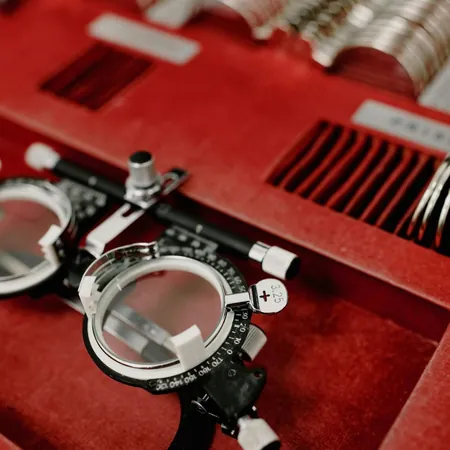
Unraveling the Mysteries of Duonychus: The Two-Fingered Dinosaur with Deadly Claws
2025-03-27
Author: Siti
Introduction
Discoveries made in the arid expanse of the Gobi Desert have unveiled an astonishing new member of the dinosaur family tree, known as Duonychus tsogtbaatari. This peculiar dinosaur, which lived approximately 90 to 95 million years ago during the Cretaceous period, is redefining what we know about dinosaur evolution and diversity.
Physical Characteristics
Duonychus measured an impressive 3 meters in length and weighed around 260 kg. Its most striking feature? A pair of formidable, curved claws that measured nearly 30 cm long, resembling those of a raptor despite its vegetarian diet. Paleontologists have dubbed these claws "big, sharp, and nasty," highlighting their potential use both for feeding and other activities.
Classification and Evolution
This dinosaur belongs to a group known as therizinosaurs, a branch of theropods that also includes iconic carnivores like Tyrannosaurus rex. Uniquely, therizinosaurs like Duonychus were gentle giants, primarily herbivores with unusual body proportions: a round torso, long neck, and a small head. While most therizinosaurs had three claws, the evolution of Duonychus with only two fingers adds a fascinating twist to this lineage, with its name even meaning "two claw."
Research Insights
Lead researcher Yoshitsugu Kobayashi from Hokkaido University describes therizinosaurs as “some of the weirdest dinosaurs.” He elaborates that Duonychus elevates that strangeness, showcasing evolutionary experimentation that resulted in an effective feeding mechanism with its unique claw structure.
Habitat
The environment where Duonychus lived was semi-arid and dotted with river channels, sharing its habitat with various other dinosaurs—from armored and horned species to early relatives of T. rex, such as Alectrosaurus. While the recovered skeleton was incomplete—with parts like the skull and legs missing—the arms and claws are exceptionally well-preserved, allowing scientists to glean insights into the creature’s morphology and habits.
Remarkable Findings
A particularly exciting find was the intact keratin sheath surrounding one of the claws, which adds over 40% to its length. According to co-author Darla Zelenitsky of the University of Calgary, this remarkable preservation might provide clues about Duonychus's daily activities. The claws served not only for foraging, snagging branches, and stripping leaves but could also function in defense or even social interactions among other Duonychus individuals.
Digit Reduction in Dinosaurs
The study of digit reduction in dinosaurs takes an interesting turn with Duonychus. While many dinosaurs began with five fingers, evolution led to several lineages adopting a two-fingered configuration. This discovery adds Duonychus to five known theropod lineages exhibiting this trait, diverging from the traditional understanding of digit utility.
Evolutionary Implications
But why would fewer fingers be advantageous? Zelenitsky speculates that, despite the intuitive belief that more fingers would aid in foraging, the specific adaptations in Duonychus’s anatomy suited its herbivorous lifestyle perfectly. This adaptability showcases the dynamic course of evolution, suggesting that each species finds its way of thriving in an ecosystem, regardless of conventional anatomical expectations.
Conclusion
As paleontologists continue digging into the rich history of Mongolia's prehistoric landscapes, discoveries like Duonychus remind us just how varied and wondrous the age of dinosaurs truly was. What other secrets lie buried beneath the sands of time? Stay tuned to find out!


 Brasil (PT)
Brasil (PT)
 Canada (EN)
Canada (EN)
 Chile (ES)
Chile (ES)
 Česko (CS)
Česko (CS)
 대한민국 (KO)
대한민국 (KO)
 España (ES)
España (ES)
 France (FR)
France (FR)
 Hong Kong (EN)
Hong Kong (EN)
 Italia (IT)
Italia (IT)
 日本 (JA)
日本 (JA)
 Magyarország (HU)
Magyarország (HU)
 Norge (NO)
Norge (NO)
 Polska (PL)
Polska (PL)
 Schweiz (DE)
Schweiz (DE)
 Singapore (EN)
Singapore (EN)
 Sverige (SV)
Sverige (SV)
 Suomi (FI)
Suomi (FI)
 Türkiye (TR)
Türkiye (TR)
 الإمارات العربية المتحدة (AR)
الإمارات العربية المتحدة (AR)